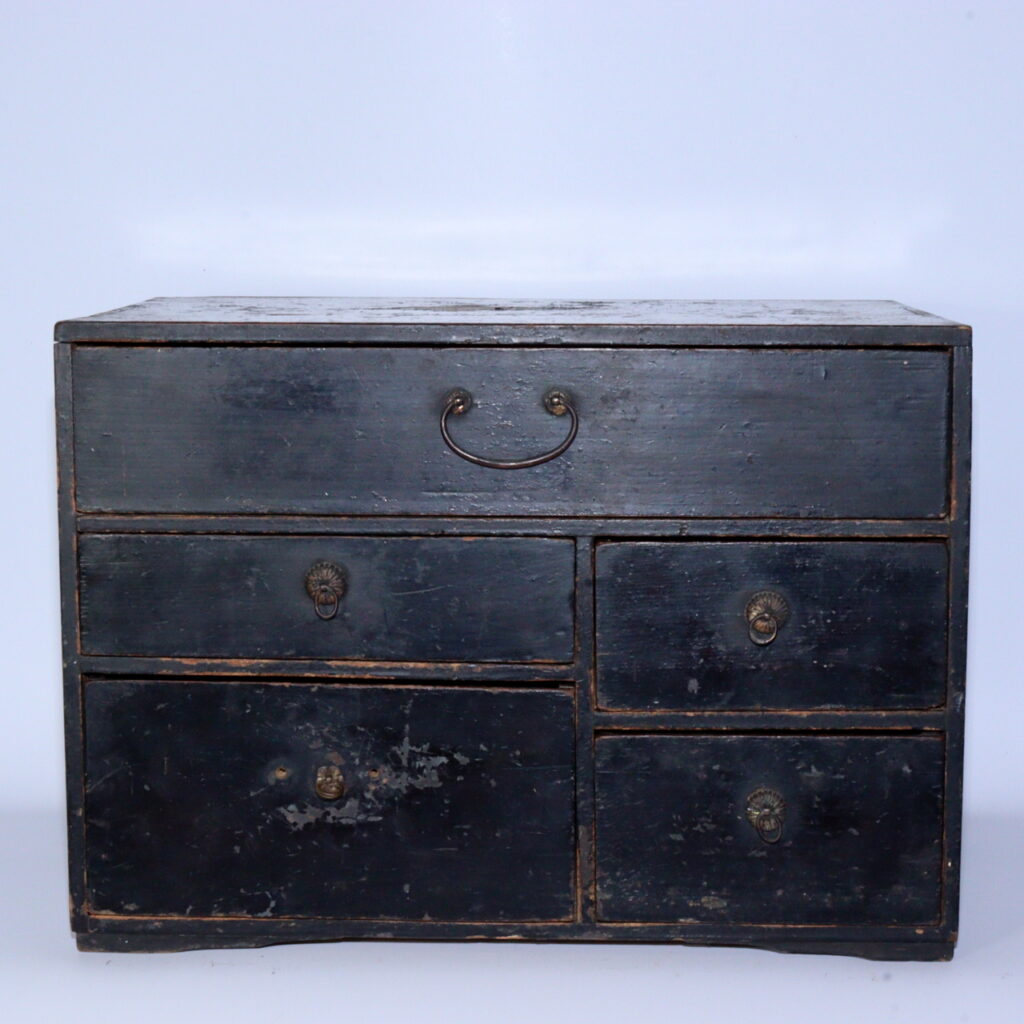
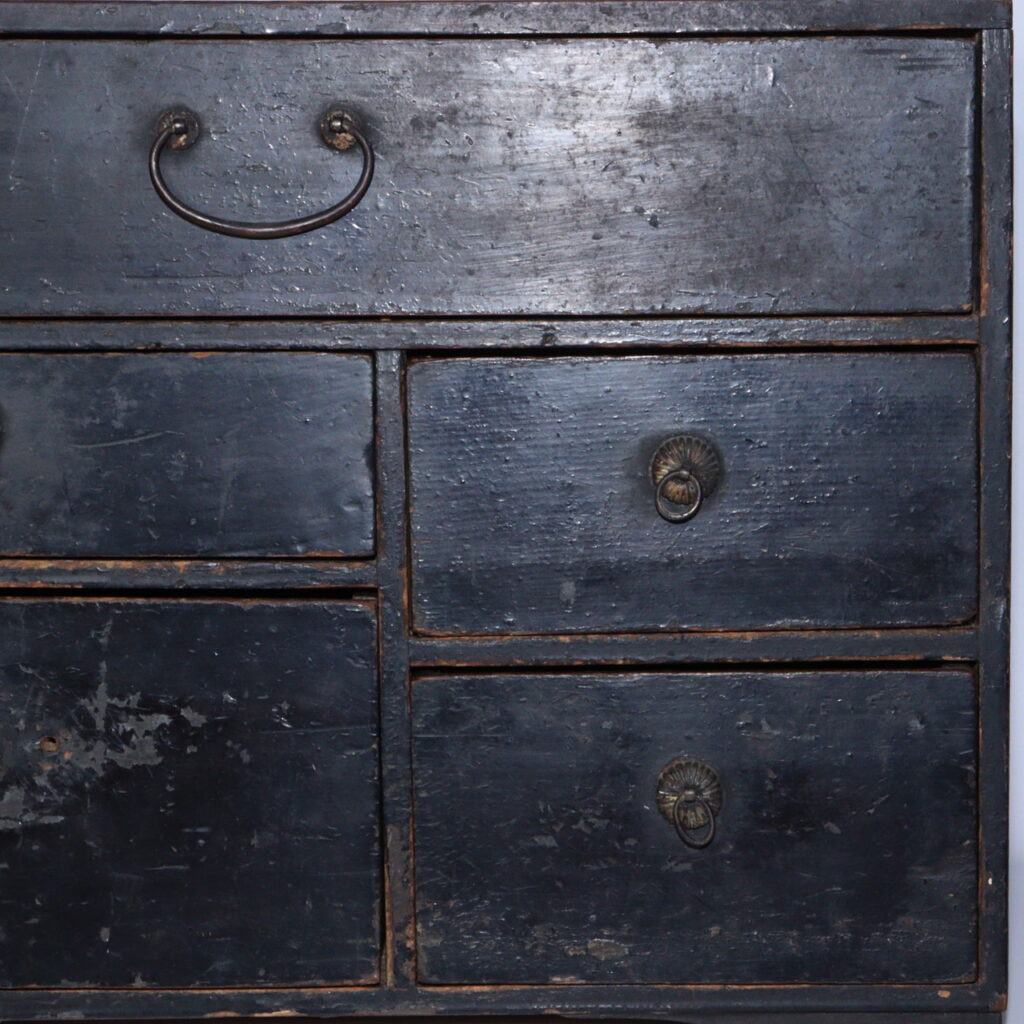
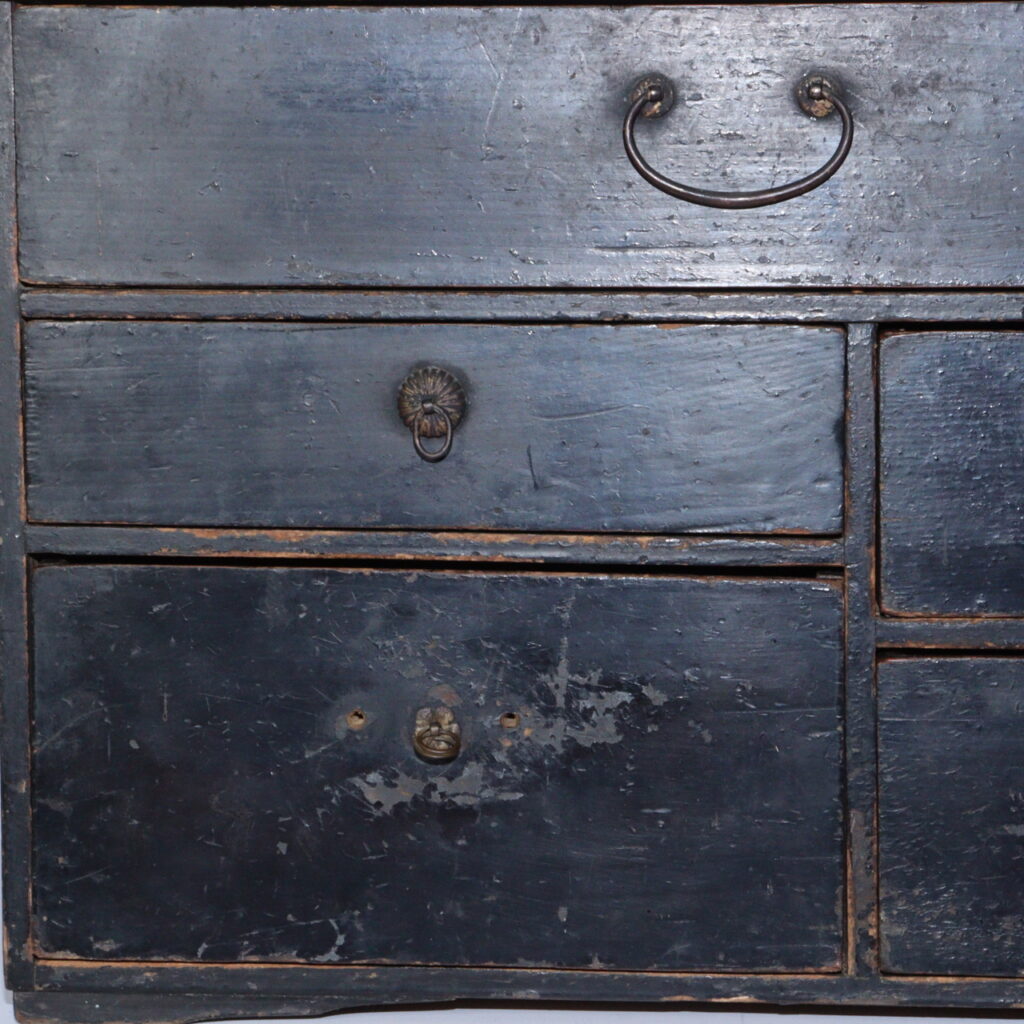
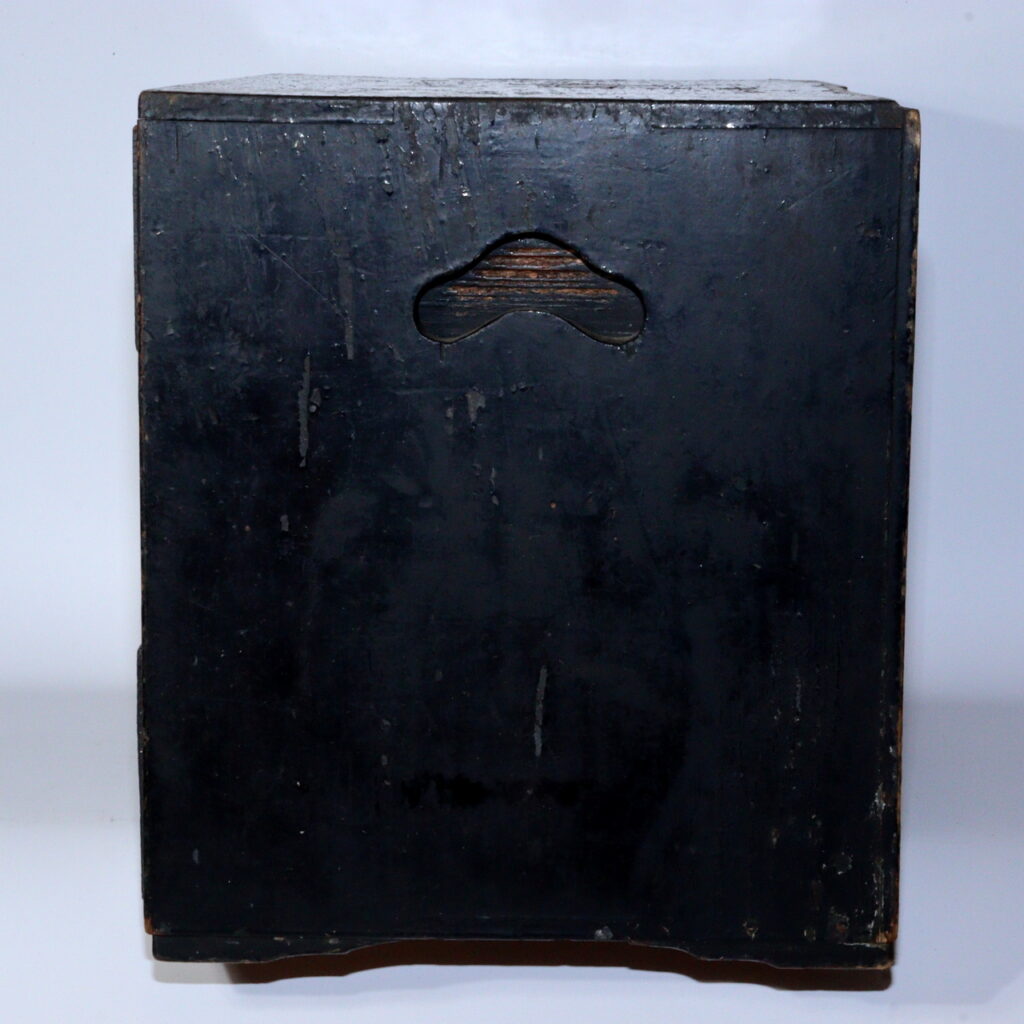
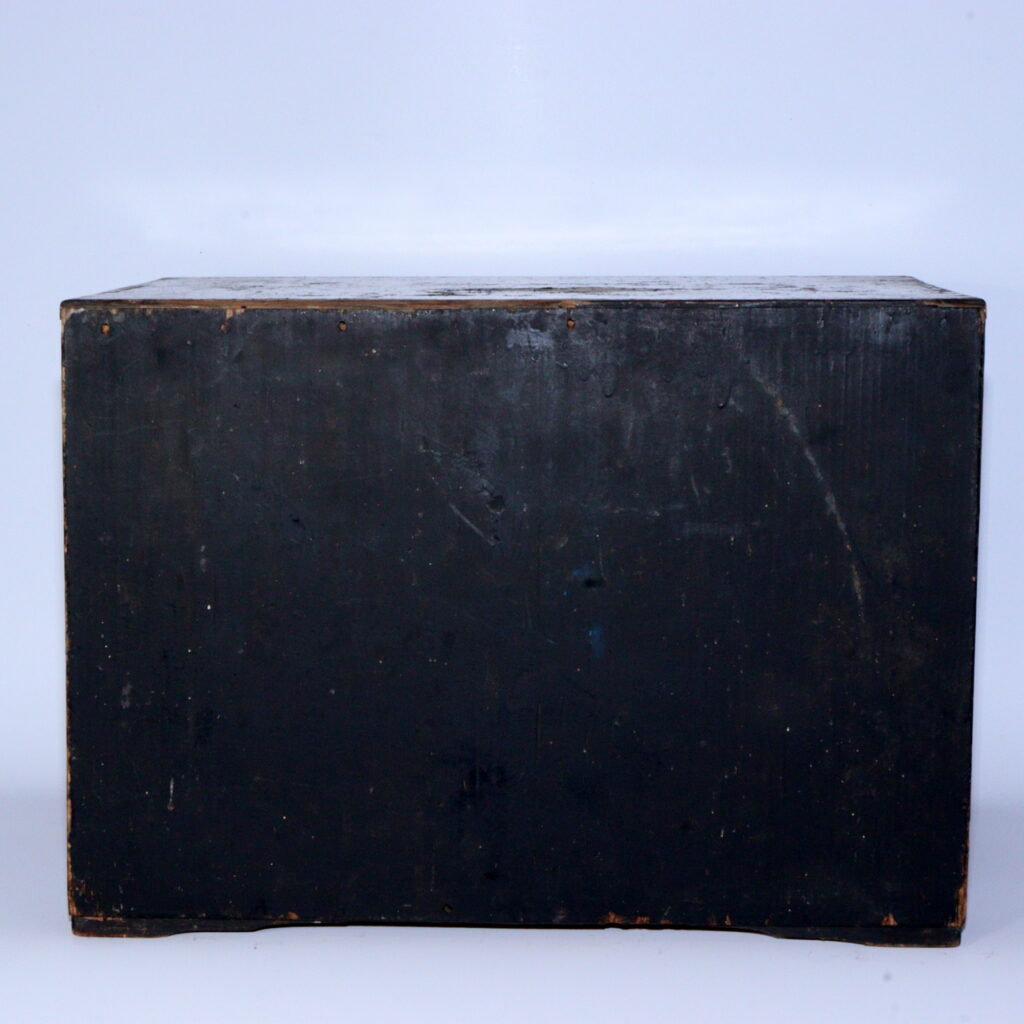
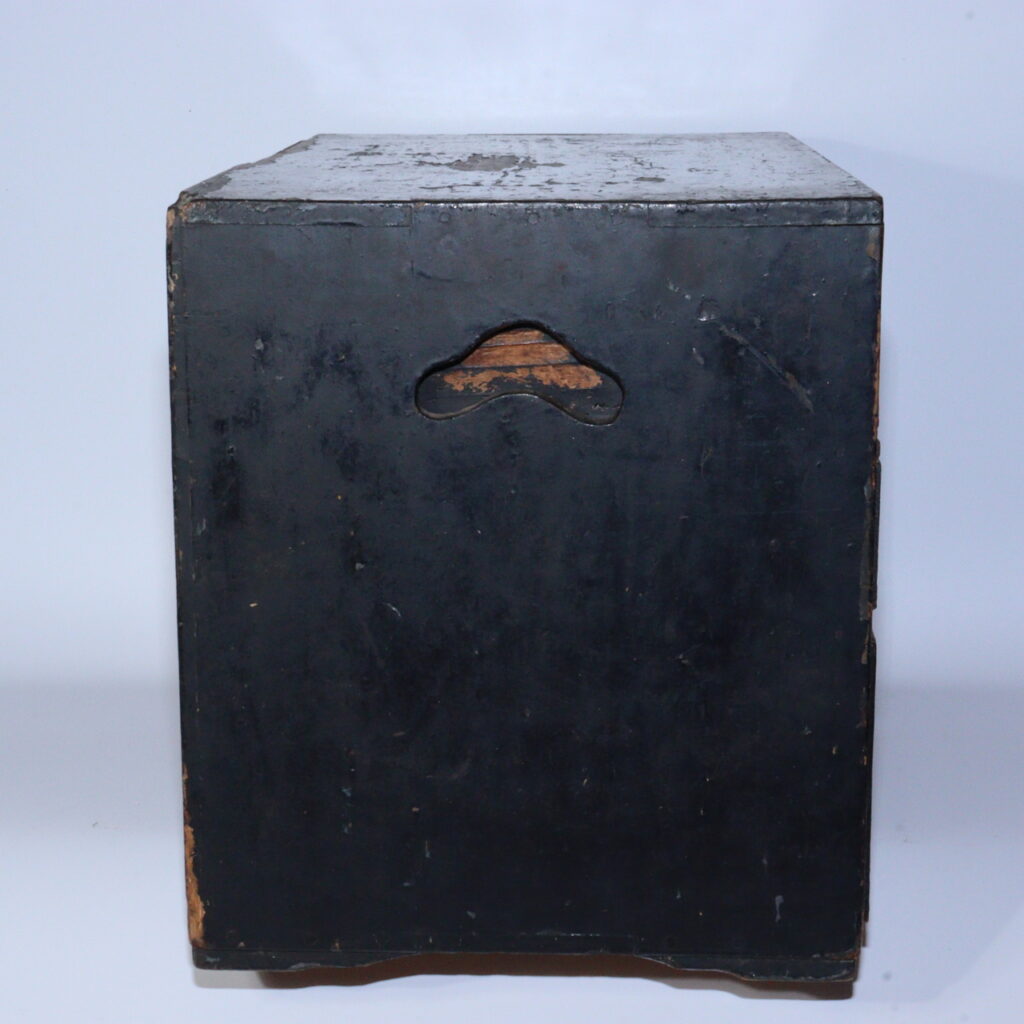
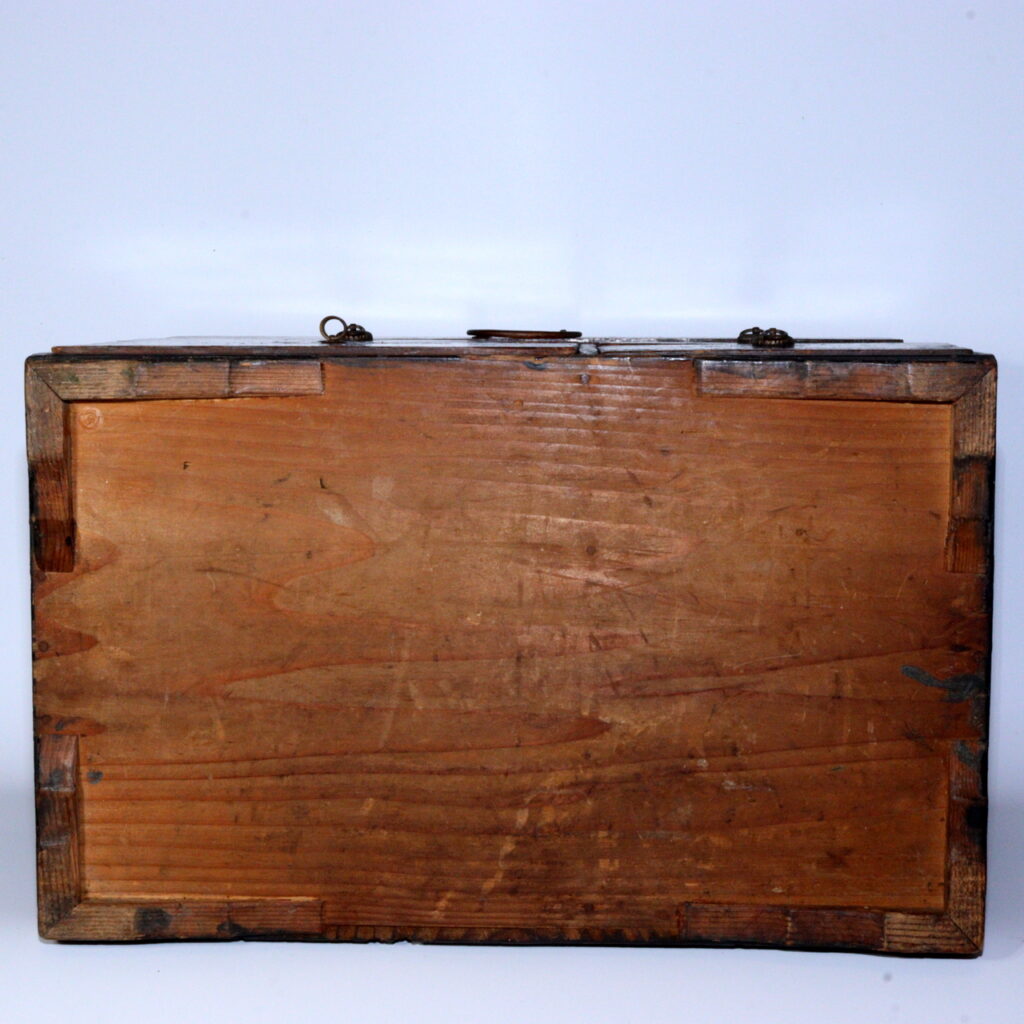
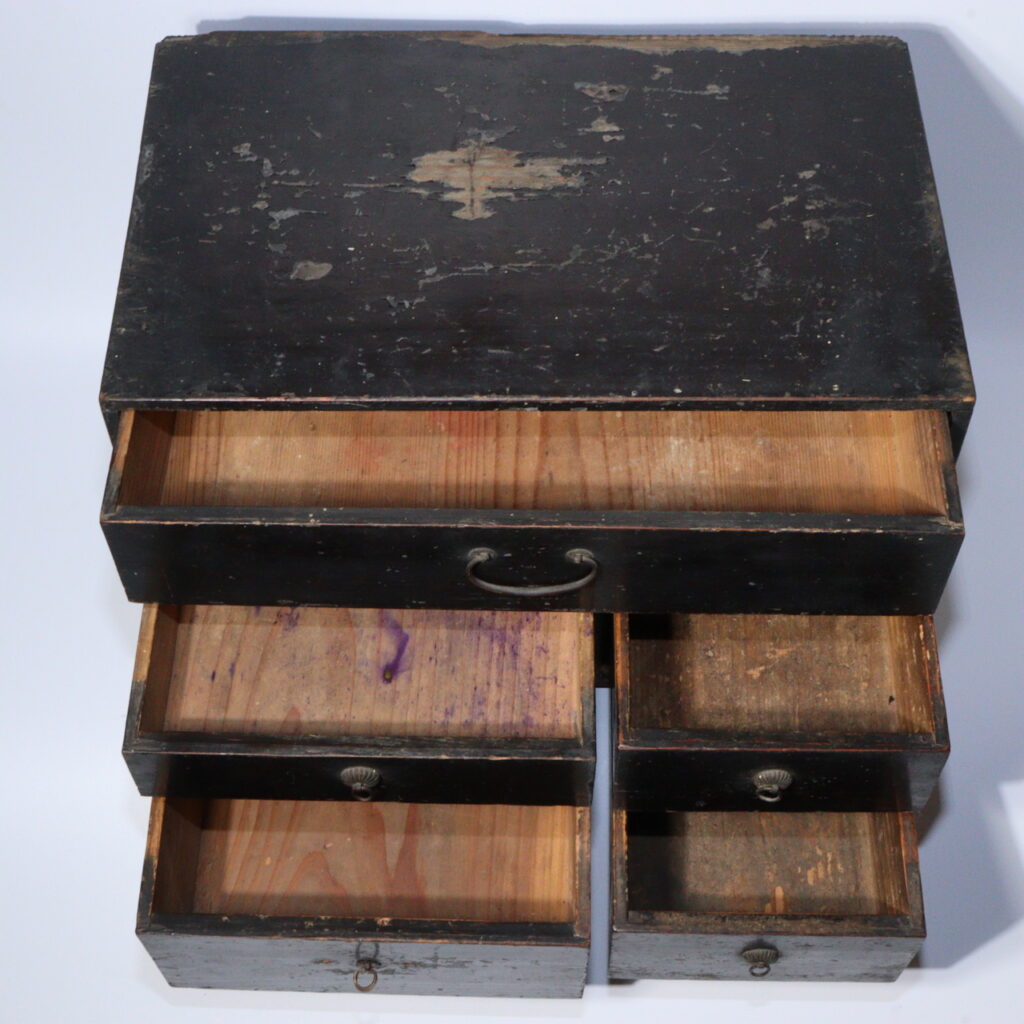
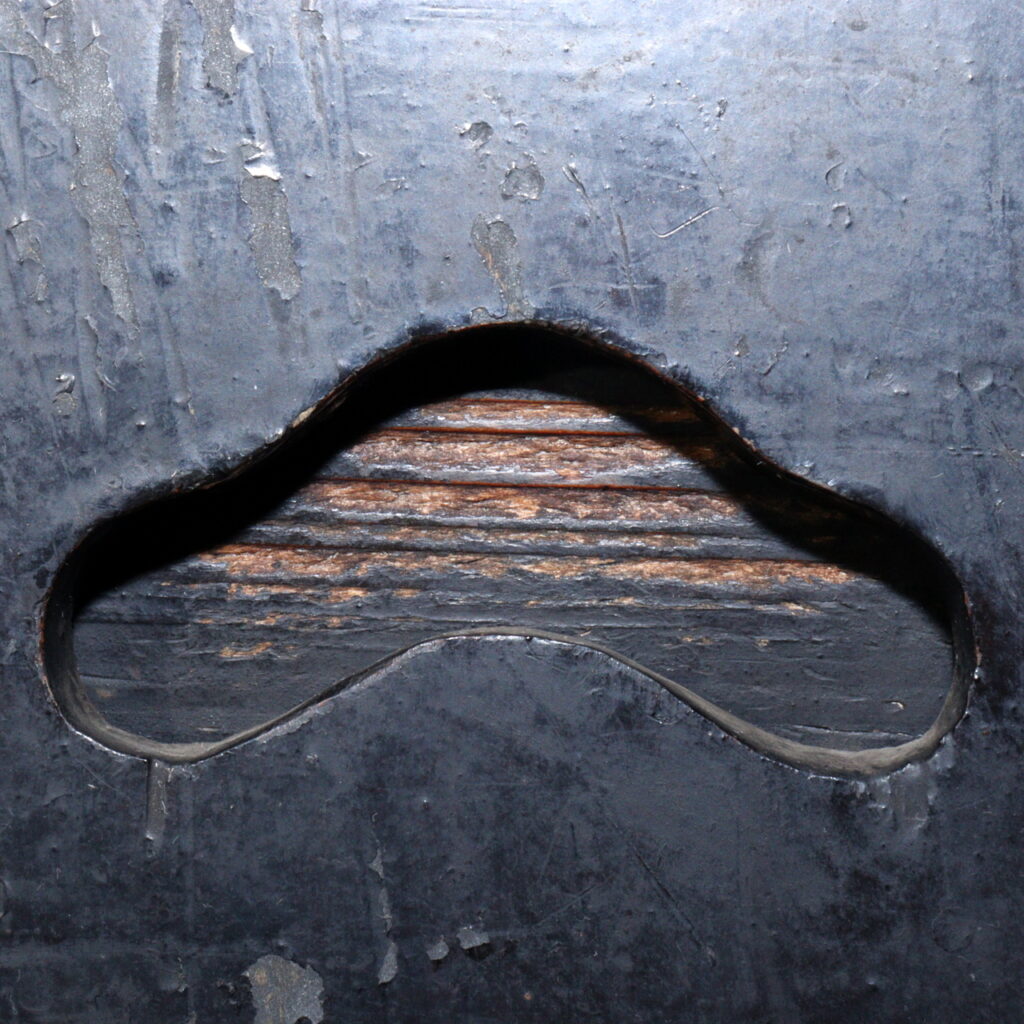
A timeless glimpse into Edo craftsmanship and daily life
In the quiet beauty of Japanese antiques, few objects tell the story of everyday life as eloquently as a Tansu, or traditional chest of drawers. This small Edo-period Tansu, finished in black lacquer and softened by centuries of use, stands as a modest yet powerful symbol of Japan’s refined sense of form and function.
The Story Behind This Piece
During the Edo period (1603–1868), Japan flourished under peace and cultural growth. Everyday items—storage chests, tea ware, ceramics, and even writing tools—were crafted not merely for utility but with deep aesthetic awareness.
This small wooden chest of drawers, or ko-tansu, would have belonged to a merchant or a samurai household, serving as a storage box for documents, accessories, or writing implements.
Its black lacquer coating (urushi-nuri) was both protective and symbolic: the color represented formality and dignity. Over time, the lacquer has mellowed to a warm sheen, its surface showing gentle wear that reveals the life it has lived. The detached metal fittings on the handle tell their own story—signs of genuine age and use that enrich rather than diminish its character.
The Charm and Details of This Antique
The Tansu’s design is elegantly simple yet perfectly balanced.
A large upper drawer sits above four smaller drawers, creating both visual harmony and functional versatility. Each metal handle and fitting—though aged and slightly worn—was handmade by Edo-period craftsmen. The subtle curves of the iron handles, along with the delicate floral motifs on the fittings, reflect the meticulous artistry that defined traditional Japanese woodworking.
What makes this piece truly captivating is its patina—the deep, organic glow developed through generations of use. This texture cannot be replicated by modern reproduction; it embodies the concept of wabi-sabi, the quiet appreciation of imperfection and impermanence.
Collectors of Japanese antiques and Meiji-era furniture often seek such authenticity, where history and beauty merge seamlessly.
Why It Matters to Overseas Collectors
For international collectors, Edo-period wooden objects like this are more than decorative; they are windows into Japan’s pre-modern society.
This chest illustrates the shift from handcrafted household tools to early forms of interior art—pieces admired not just for their utility but for their soul.
Today, antique Tansu furniture is highly regarded worldwide, particularly in the United States and Europe, where it complements both traditional and minimalist interiors. Its timeless silhouette pairs effortlessly with ceramics, bronze ornaments, and even kintsugi-repaired pottery, celebrating a shared philosophy of enduring beauty.
Owning such a piece connects one to the rhythm of Edo life—to the touch of the artisan’s chisel, the brush of lacquer, and the patient care of those who used it centuries ago.
Conclusion
This Edo-period small Tansu chest embodies the quiet elegance and enduring craftsmanship that define the best of Japanese antiques. Its weathered surface, handcrafted fittings, and harmonious proportions remind us that true beauty resides not in perfection but in time itself.
If you would like to view or purchase this piece, please visit
🔗 See other wooden antique boxes and chests (WBX Collection)
Category: Item Stories
Tags: Japanese antiques, Edo period, Tansu, Meiji, lacquer, wabi-sabi, craftsmanship, kintsugi philosophy